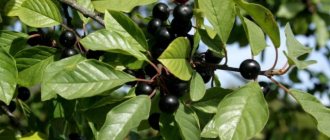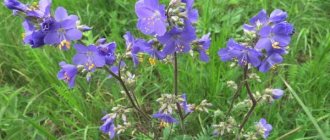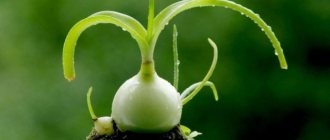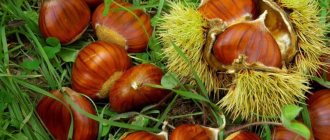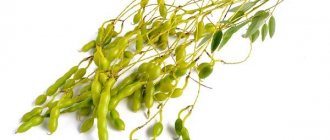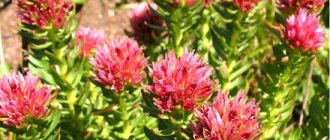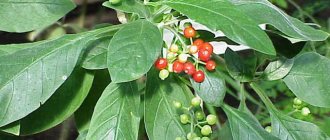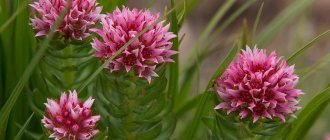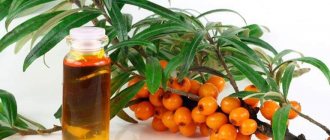Buckthorn is a perennial shrub whose fruits are not edible. For a long time, this crop was used only for weaving, as its bark produced a persistent yellow dye. And only over time the plant acquired medicinal status, when the laxative properties of the bark were discovered. Now the culture is widely used in pharmaceuticals. But before using it, it is necessary to study in detail the beneficial properties and contraindications of buckthorn bark, which will allow you to correctly use this medicinal component.
Popularly, buckthorn fruits are called “wolf berries.”
Release form
The medicine is produced in the form of tablets, which are coated, they are packaged in 50 pieces in a plastic bottle.
Dark brown raw materials containing pieces of bark of various shapes are also produced. It has a slight odor and a slightly bitter taste. These raw materials are packaged in packages of 50 and 75 grams.
Raw materials are also produced in filter bags, which are packaged in cardboard packages of 10 and 20 pieces.
Liquid buckthorn extract is contained in glass bottles of 25 ml and 50 ml.
Types of buckthorn, classification
The plant is popularly known as crow's eye (due to the black color of the fruit) and wolf berries. The shrub grows in Crimea, the northern part of Kazakhstan and Western Siberia. The plant is also found in the western part of Russia. Buckthorn is not afraid of shade and grows well near swamps, cold lakes and rivers.
Buckthorn is distinguished by its species diversity (there are more than 150 species): from small spreading shrubs to trees 7 m high.
For medicinal purposes, mainly 3 types are used:
- alder (Frangula alnus): dark brown branches, round leaves, reddish fruits;
- zhoster (Rhamnus cathartica): tree with a twisted trunk up to 7.5 m high, black bark, dark purple fruits;
- American species or cascara (Frangula purshiana): low shrub, fruits ripen in clusters, black in color.
pharmachologic effect
The medicinal properties of buckthorn bark have been known for a long time: it acts as a laxative due to the presence of anthraglycosides , which irritate the receptors of the colon mucosa.
Brittle buckthorn (other names: alder buckthorn, Fine line brittle buckthorn) is a shrub whose young shoots are covered with grayish bark. Later the bark becomes brownish-black. The tops of the plant's branches have straight spines and the plant blooms with green-yellow flowers. More detailed features can be seen in the photo of brittle buckthorn.
Almost all parts of this plant - bark, fruits, leaves - contain anthraglycosides and other biologically active components.
The bark has some properties that need to be taken into account. Thus, the use of buckthorn bark is possible only one year after its collection. When the bark is taken fresh, the patient may develop nausea , vomiting , and headaches . In addition, fresh bark can cause serious damage to the gastric mucosa.
Chemical composition
The beneficial properties of buckthorn used in medicine are due to the unique chemical composition of the plant. The bark of this shrub, its berries and seeds contain the following elements:
- Anthraglycosides (frangularoside). Natural chemical compounds that enhance natural intestinal motility, irritating its walls. Their presence provides the main therapeutic effect of the use of buckthorn - a laxative effect.
- Tannins. Relieves inflammatory processes, reduces secretory activity of the gastrointestinal tract. They provide protection to mucous membranes from harmful microorganisms and have the ability to remove heavy metals from the body.
- Alkaloids. They have a hemostatic effect, analgesic, and calming sedative effect. Lower blood pressure levels.
- Organic acids (succinic, ascorbic, malic acids). Natural antioxidants – activate digestion processes. removes toxins and waste.
- Gum. Suppresses appetite, lowers blood cholesterol levels.
- Pectins. They increase the intensity of peripheral blood circulation, which helps normalize digestive processes. Provides normal natural intestinal motility.
- Essential oils (higher content in berries, lower content in bark). They have a positive effect on the functionality of the nervous system and stimulate its work. They have antiseptic properties.
- Mineral composition: potassium (normalizes myocardial function, relieves edema, lowers blood pressure); calcium and magnesium (strengthening the immune system, bone tissue; normalizing nervous activity, functioning of the vascular system); manganese (normalization of lipid metabolism); iron, copper (activation of the immune system, hematopoietic system); boron (normalization of hormonal balance and reproductive function).
Contraindications for buckthorn bark
Contraindications for the use of this medicine are defined as follows:
- high sensitivity to the product;
- constipation associated with endocrine and neurogenic origin;
- intestinal obstruction;
- spastic constipation;
- metrorrhagia;
- acute abdomen syndrome;
- colitis , enteritis, appendicitis ;
- acute fever.
Not for use during pregnancy, during lactation, and not for children under 12 years of age.
For gastritis
A collection of dried leaves of trifoli and yarrow in combination with buckthorn bark helps well with gastritis, even if the disease has become chronic. The decoction gently coats the stomach, relieves pain and improves digestion.
It’s easy to prepare the infusion:
- 1 liter of water is poured into the pan and brought to a boil;
- add buckthorn bark (3 tbsp), watch and yarrow (1 tbsp each);
- the collection is cooked for 7-8 minutes;
- Remove from the stove, cover with a lid and leave for 4 hours.
It is recommended to take the prepared infusion 200 ml for 7 days. Exceeding the dose and timing of use is undesirable. If after administration the patient feels a deterioration in his condition, self-treatment should be interrupted and consult a doctor.
Instructions for buckthorn bark (Method and dosage)
The drug in bags is used as follows: three filter bags must be placed in a container and filled with 100 ml of boiling water. The drink is infused for 15 minutes, and from time to time you need to press on the bags with a spoon and squeeze them out. The resulting solution must be brought to 100 ml with boiled water.
Half a glass should be taken orally, warm. Treatment continues for 2-3 weeks.
A bark decoction is prepared by pouring one tablespoon of bark into a glass of water. Next, this mixture should be boiled for 20 minutes. After straining, take half a glass of the decoction in the morning and evening. The recipe for how to prepare a decoction of buckthorn bark in Latin contains similar recommendations.
Tablets should be taken before bed, 1 or 2 pieces, depending on the doctor’s recommendations.
The extract is taken 20-40 drops in the evening; another treatment regimen is possible as prescribed by a doctor.
Indications for use
Buckthorn bark is used for chronic constipation. Most often, raw materials are taken in the form of a decoction. It is also used in industrial production - the bark is included in many medications for constipation.
Laxative effect is a direct indication for the use of this plant.
However, other reasons for its use follow from this. Many girls use laxative properties to lose weight. In addition to the laxative effect, buckthorn’s ability to remove waste and toxins from the body also plays a role here.
A decoction of buckthorn bark is prepared in a water bath - about 2 tablespoons are brewed per 200 ml of water. The broth is filtered, water is added to the original volume and used half a glass 2 times a day.
Buckthorn bark extract has a very wide range of effects and is used for:
- constipation;
- depression;
- skin itching;
- colic;
- menopause;
- gout;
- hepatitis;
- helminthiasis.
Release forms
A large number of different dosage forms are prepared
from buckthorn bark The infusion is often used in obstetric and gynecological practice.
Alcohol tincture - for various dermatological diseases. Extract, decoction, and syrup are also prepared.
Raw buckthorn is included in pharmaceutical preparations. The decoction can be used both internally and externally as a lotion for rheumatism.
Pharmacies sell buckthorn bark in tablets and packaged form, which is brewed like tea. Ready-made dosage forms are much more convenient to take.
Buckthorn bark has a therapeutic effect 8-10 hours after ingestion.
Compound
- Anthraglycosides;
- Tannins;
- Alkaloids;
- Organic acids;
- Gum;
- Pectin;
- Flavonoids;
- Bitterness.
Macroelements : potassium, calcium, manganese, iron.
Microelements : magnesium, copper, boron.
Drug interactions
It is not advisable to take buckthorn preparations together with other medications, so as not to interfere with their absorption and reduce their effectiveness. Therefore, you should observe the interval between taking buckthorn and other medications.
Buckthorn in gynecology
The plant was widely used and is used among people for problems with menstruation and hormonal imbalance. Decoctions are taken immediately after childbirth, helping a woman cleanse her intestines. The addition of other herbs helps to bring the hormonal levels in order: lemon balm, valerian root and convulsive (goose) grass.
According to the classic recipe, take 2 tbsp. shrub bark, pour 1 cup of boiling water and cover with a lid. Steam the broth for 25 minutes. For these purposes, it is advisable to use glassware, where all useful substances are preserved.
The finished decoction is consumed every day before bed, 200 ml. The plant increases intestinal contractions, ridding it of toxins, improves blood circulation and hormonal levels.
Benefit
Wolfberry contains many useful substances. These are essential oils, various acids, anthraquinones, various kinds of sugar compounds, tannins, alkaloids, and vitamin C.
It is they together that give buckthorn its main medicinal property – a laxative. Once in the body, the plant begins to act only in the large intestine - it slows down absorption, which, in turn, increases the volume of the contents there. This is how the intestines are emptied.
It should also be noted that plant-based medicines are effective and have a much gentler effect on the body. But, in any case, you should not abuse them - this is fraught with severe poisoning.
Also, the bark of this shrub has anti-edematous and antibacterial properties.
From pressure
Buckthorn, together with motherwort and wild rosemary, becomes an effective remedy for reducing blood pressure, migraines and tinnitus. Patients also note improved sleep, general condition and increased energy.
Cooking process:
- mix buckthorn bark, horsetail (1 tbsp each), wild rosemary, motherwort and marsh cudweed (2 tbsp each) in the indicated proportions;
- pour the collection with 400 ml of hot water;
- steam for 13 minutes;
- leave for half an hour.
It is recommended to drink half a glass of the decoction half an hour before each meal.
Growing
In order to propagate buckthorn, seeds or cuttings are used.
Growing wolfberry in your own garden will not cause problems, since this shrub is extremely unpretentious.
A good place for planting buckthorn would be a drained area with sufficient moisture, protected from the wind. Even on not the richest soil the plant will grow. The main condition for it is humidity.
There is no need for preliminary soil preparation for the place where the shrubs will be planted. The hole for the seedling should be one meter in size (length, width, depth). It is better to dig it in advance - a day before planting.
The further process is as follows:
- When planting a plant, it is advisable to add a mixture of sand and humus to the soil.
- Shrub seedlings must be immersed in the hole in the center, straighten the roots and sprinkle with earth, tamp down.
- Having formed a hole, the ground should be moistened and mulched with compost or peat.
Reviews from doctors about effectiveness
Buckthorn is considered one of the safest remedies to combat constipation. Doctors, often skeptical of traditional medicine, willingly prescribe buckthorn to their patients. They report quick results without serious side effects.
Buckthorn bark, despite its numerous beneficial properties, has a number of contraindications. Therefore, it is recommended to carefully monitor the body’s reaction: if any discomfort occurs, you should stop taking the decoctions. This is especially true for children and pregnant women. It is also important to allow the body to replenish moisture reserves that are lost when cleansing the intestines.
Article design: Vladimir the Great
Collection and storage rules
To obtain medicinal raw materials, it is necessary to collect the bark in early spring. This should be done when the temperature has reached above zero, but the leaves have not yet grown on the bush. Young branches and shoots of buckthorn should be selected for harvesting. They need to be cut at a height of 10 cm above the soil surface, which will allow the plant to quickly recover from stress.
We recommend reading: Sage oil: properties and uses for the face, gynecology and hair
To easily remove buckthorn bark, you need to initially make transverse cuts at a distance of 10-15 cm. And then connect them with one longitudinal one. In this case, the buckthorn bark will easily separate from the shoot in the form of a tube or groove.
Drying of the medicinal component can be done outdoors in the shade or in a well-ventilated area. To do this, the buckthorn bark should be laid out in one layer so that its parts do not come into contact with each other.
Important! The raw material is considered completely dried if it crumbles easily with slight impact.
After drying, the medicinal mixture must be carefully sorted and all blackened pieces and remains of wood removed. Buckthorn bark should be stored compressed in a tightly closed container. Shelf life – five years.
special instructions
The prepared decoction should be shaken before use.
Long-term use of buckthorn bark preparations can lead to the development of addiction and the absence or reduction of laxative effect, so it is advisable to alternate them with other drugs that stimulate intestinal activity.
During treatment, urine may turn yellow (due to the presence of chrysophanic acid in the bark), which is not a reason to discontinue the herbal medicine.
A long course of therapy is recommended only after appointment by a specialist.
For scabies
Buckthorn (bark, the beneficial properties and contraindications of which are described above, is widely used among the people) can help with itchy skin. But only at an early stage of the disease. If the itching continues for a long time, you should seek help from a doctor.
For the decoction you need to prepare 1 tbsp. bark and half a liter of water. The components are mixed, placed on the stove and brought to a boil. After half an hour, the broth is removed and cooled. The tincture requires 2 hours. The skin is washed with the prepared broth in the morning, afternoon and evening every day. The very next day you feel relief.
